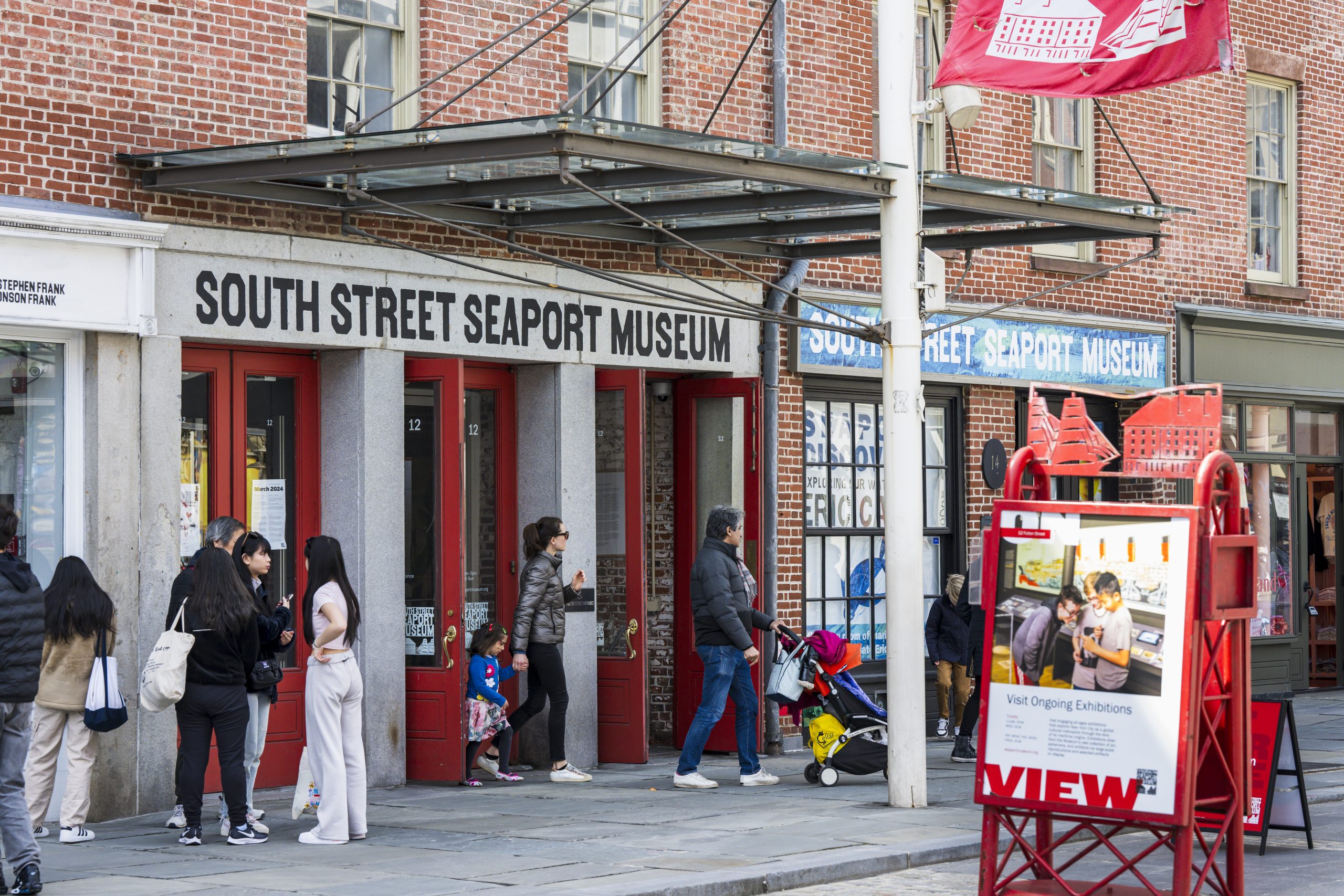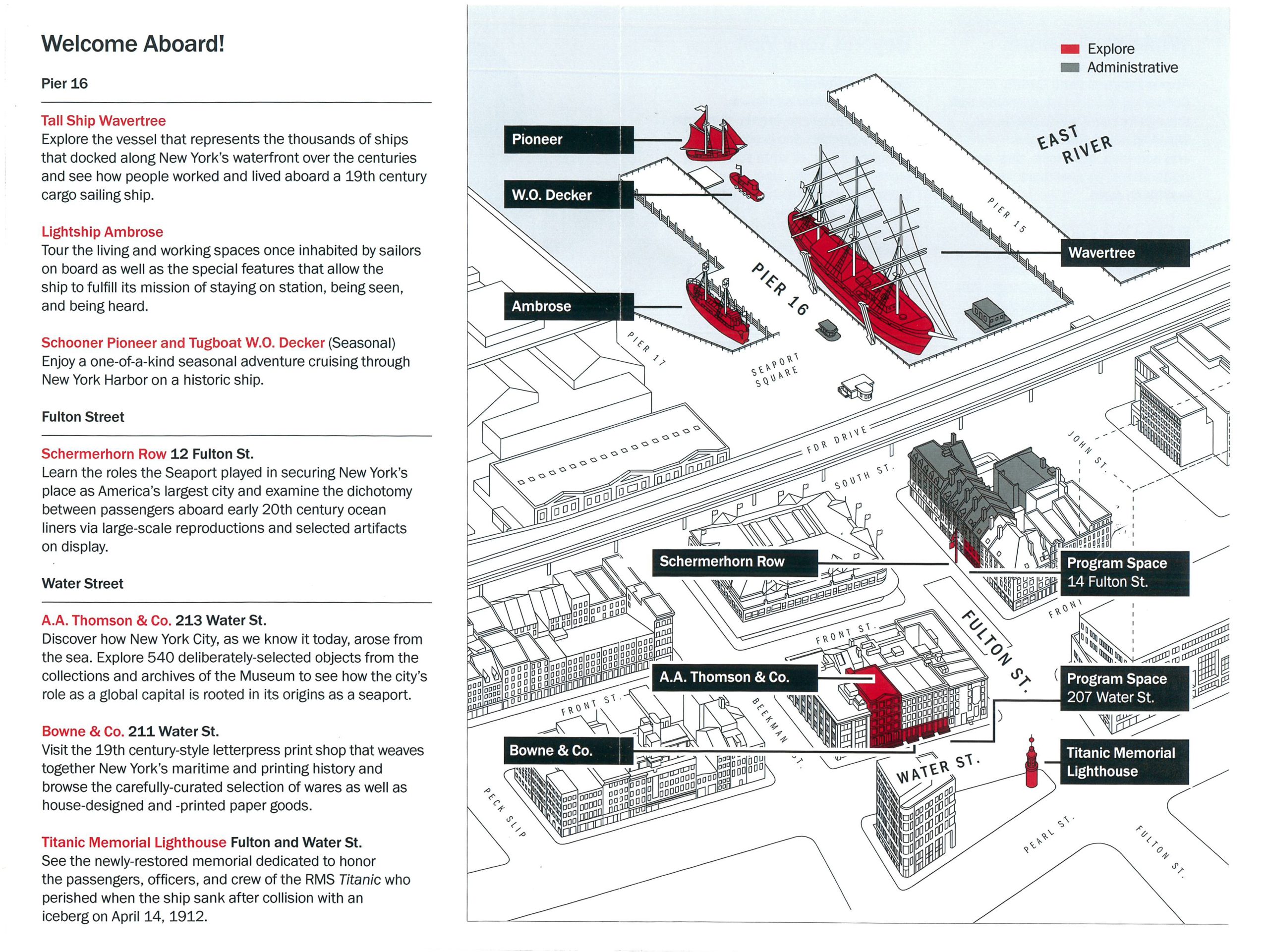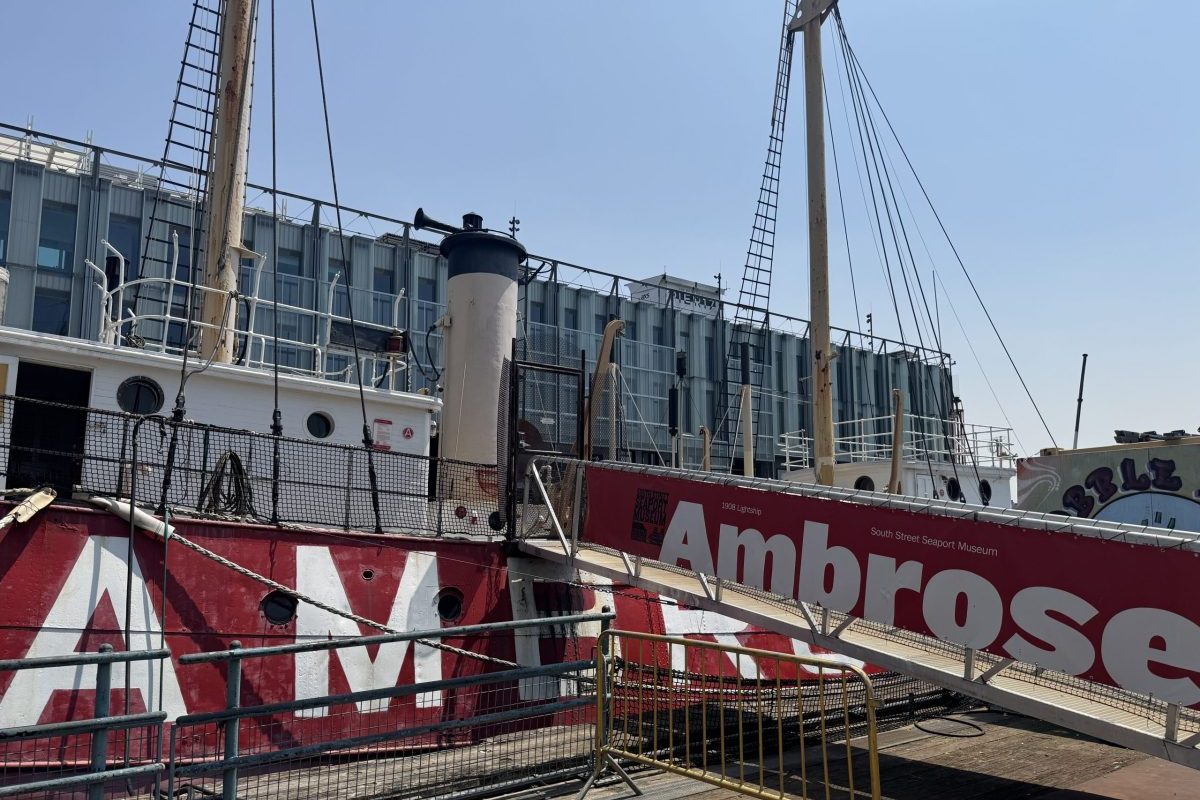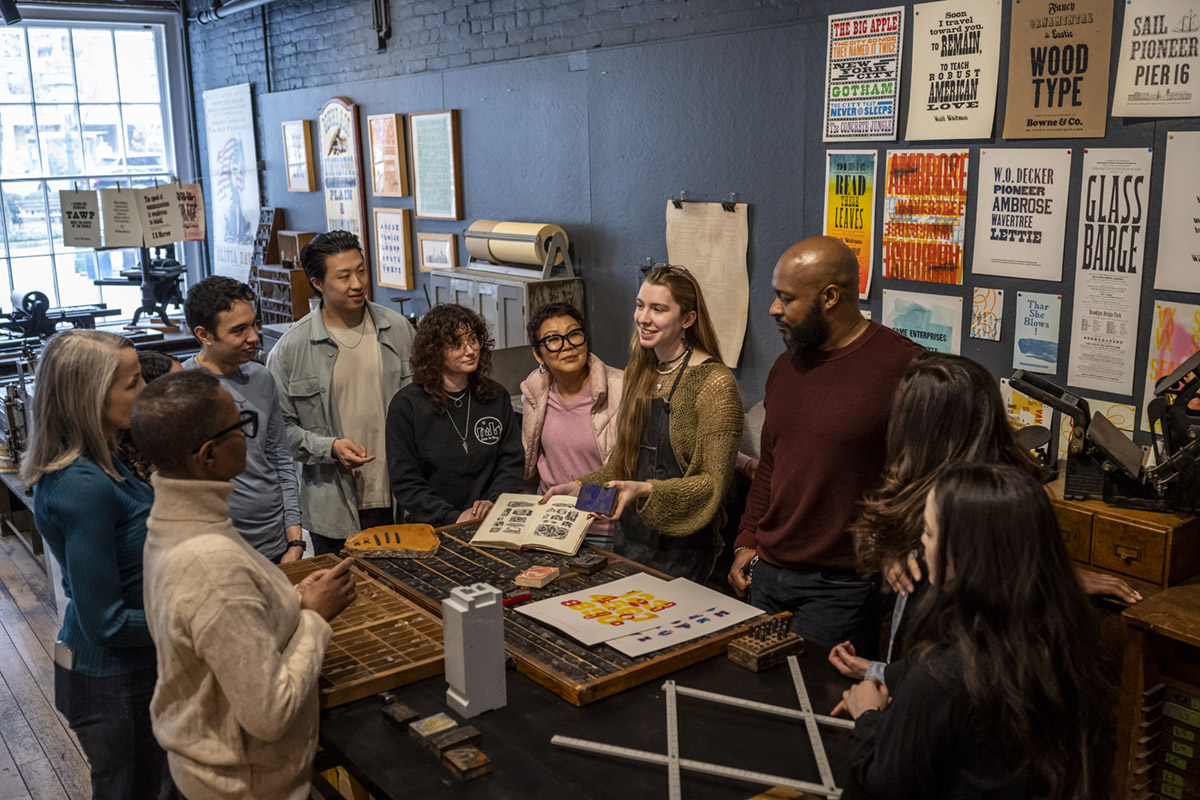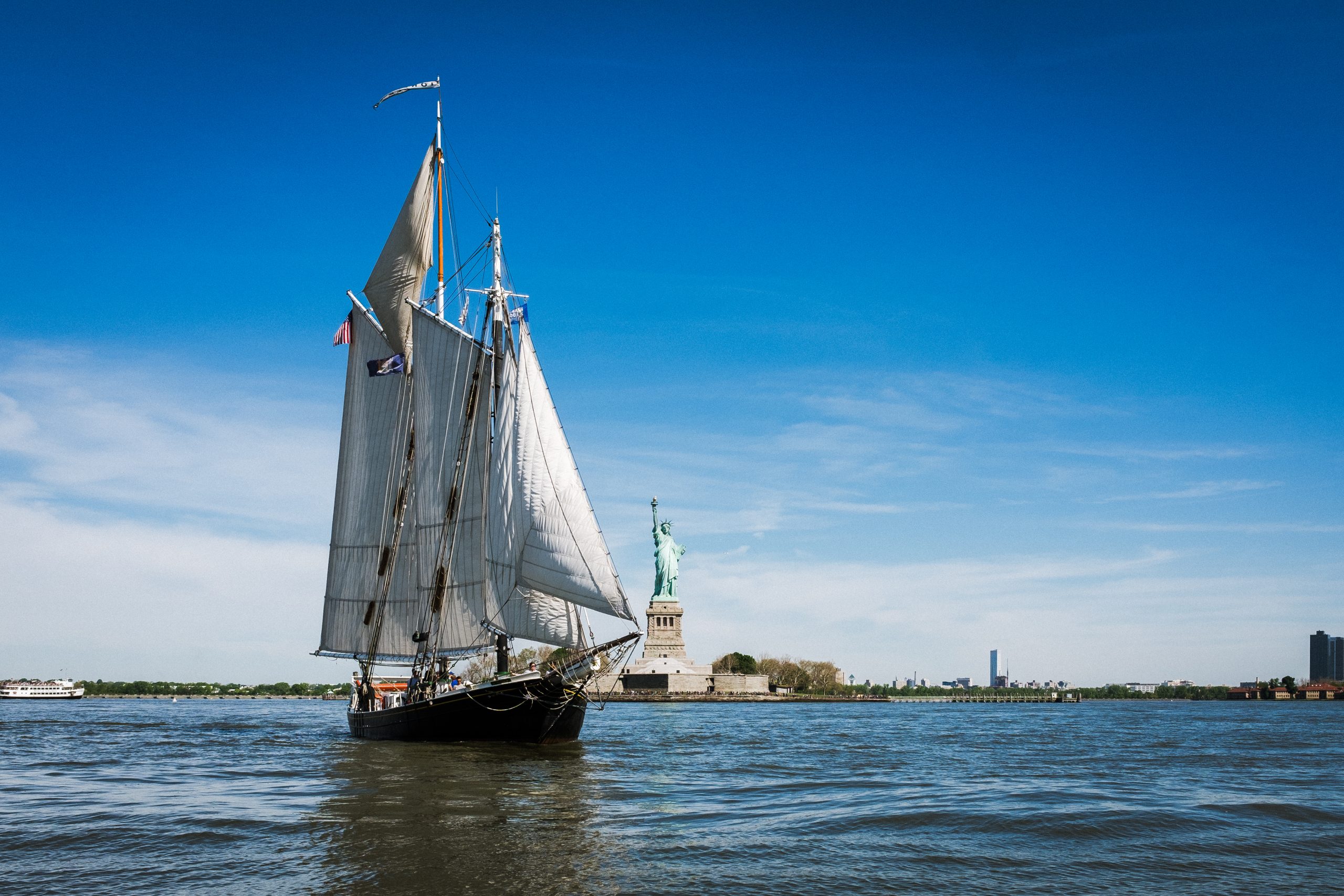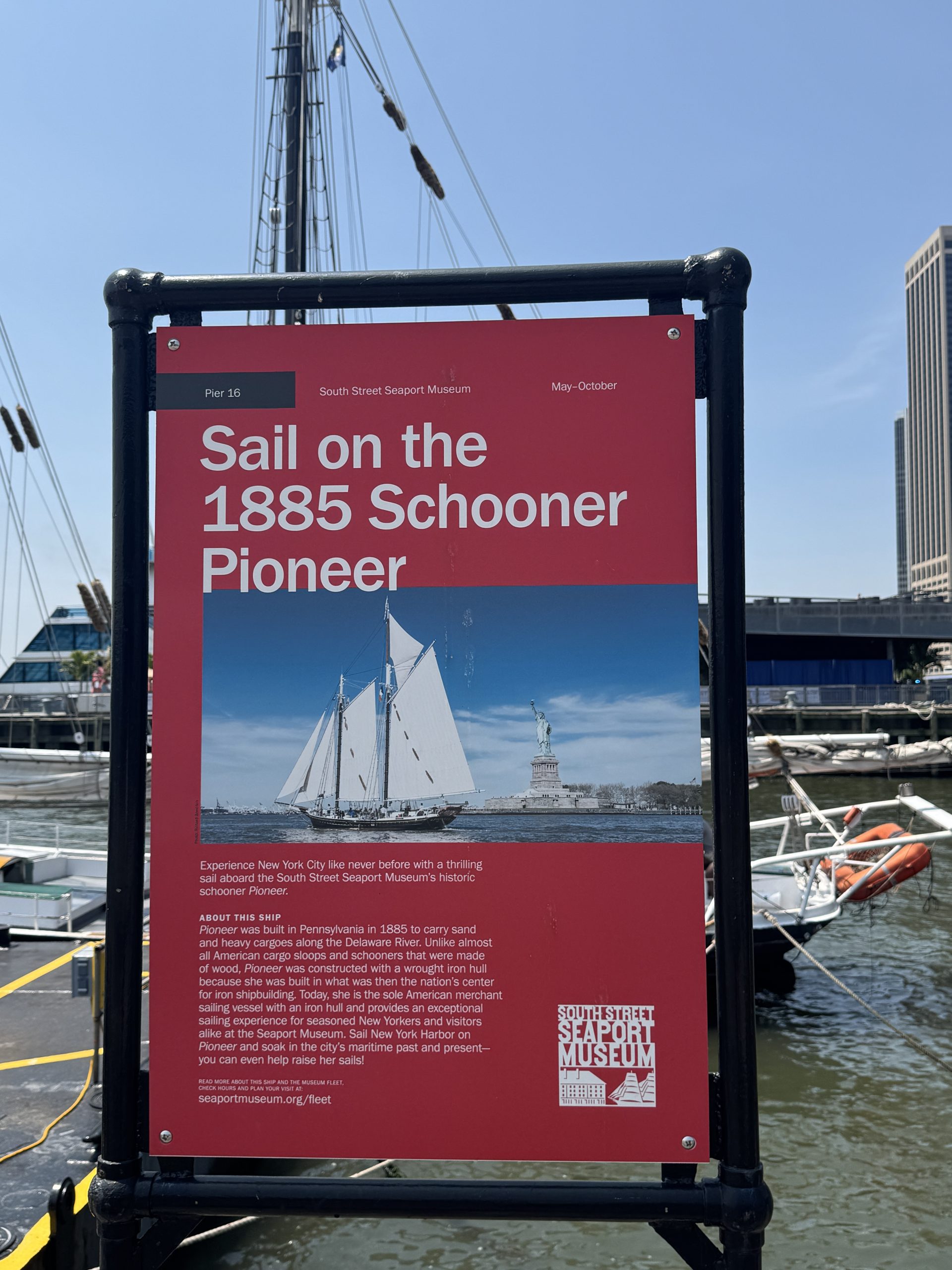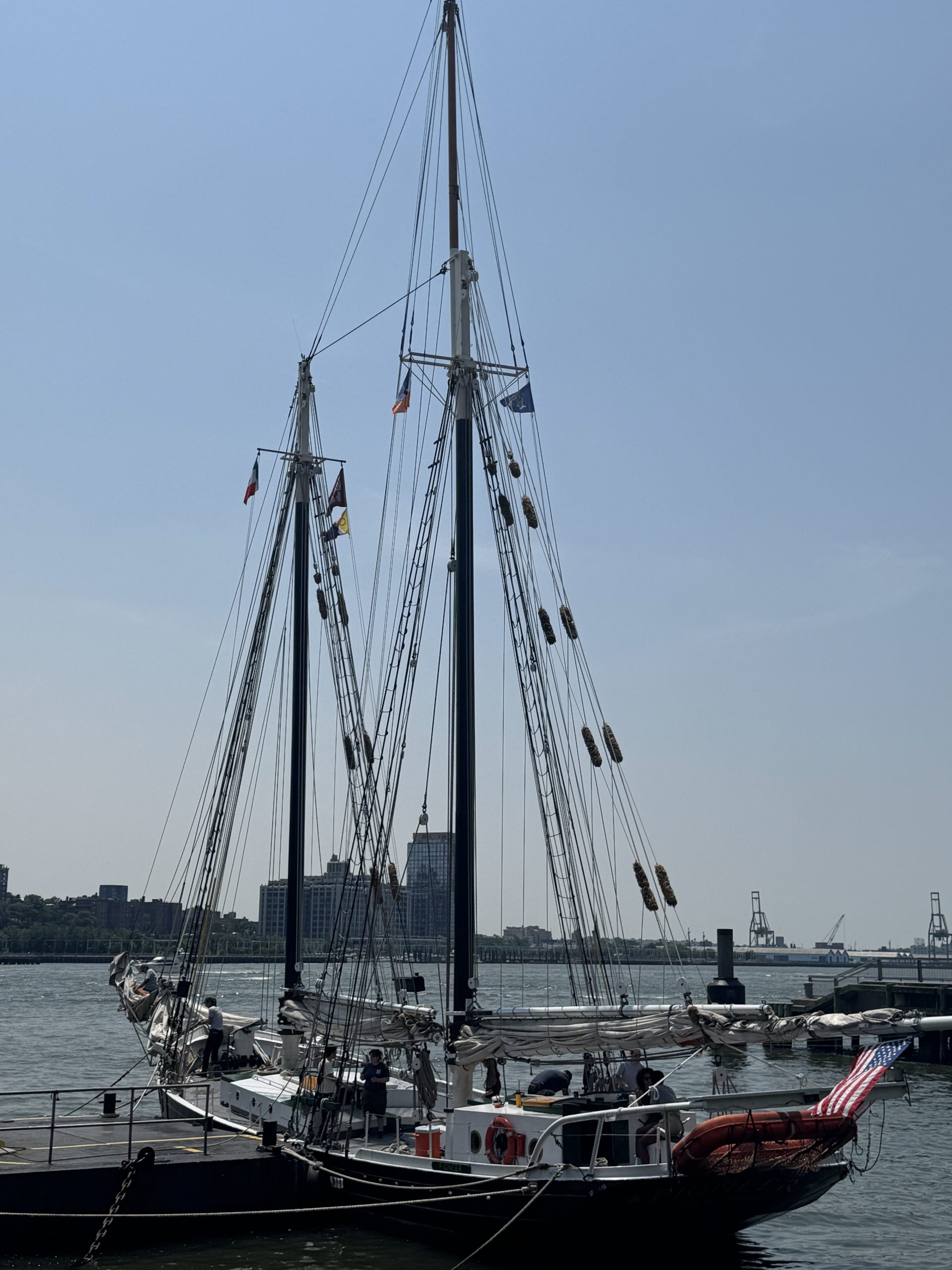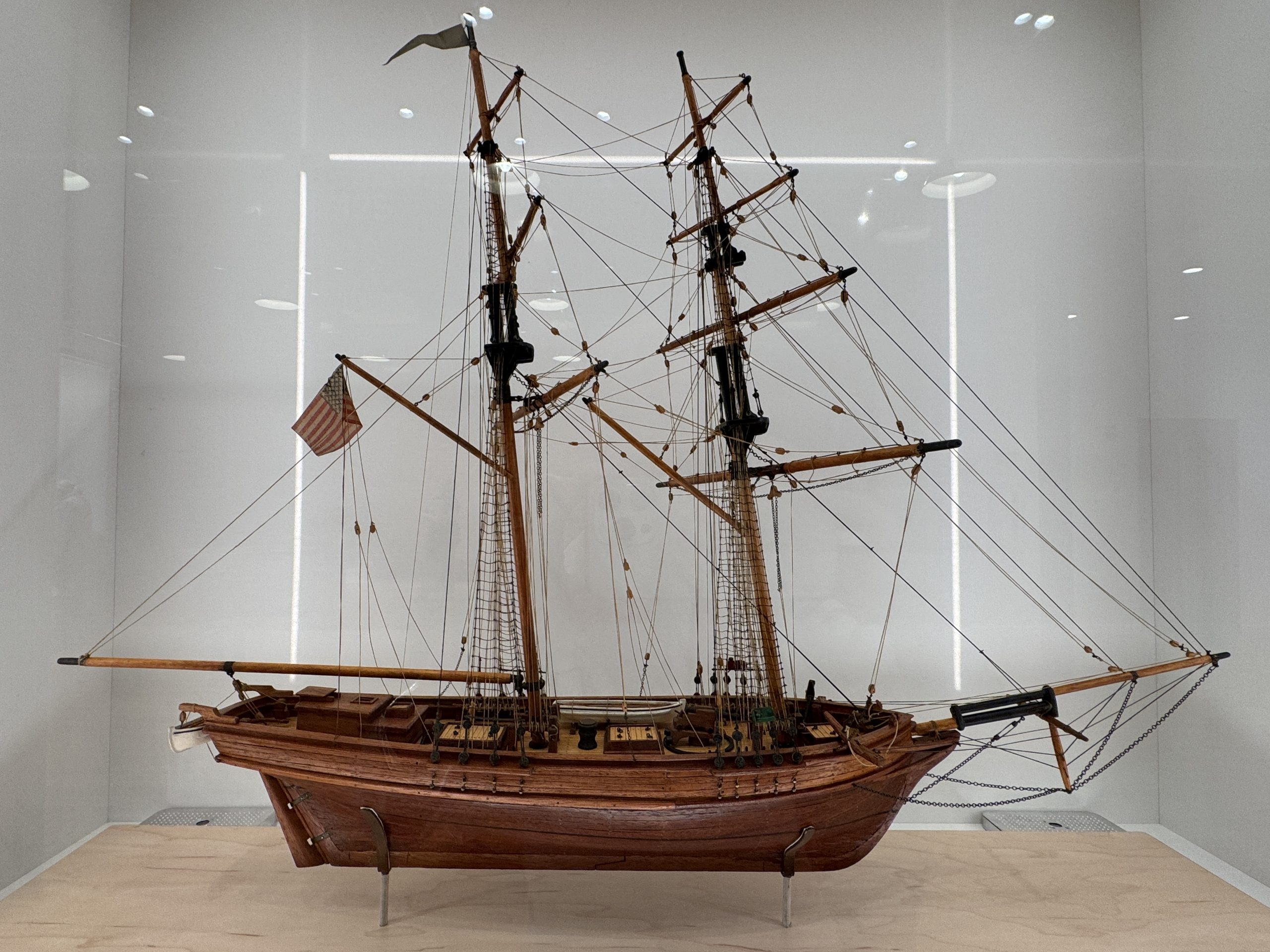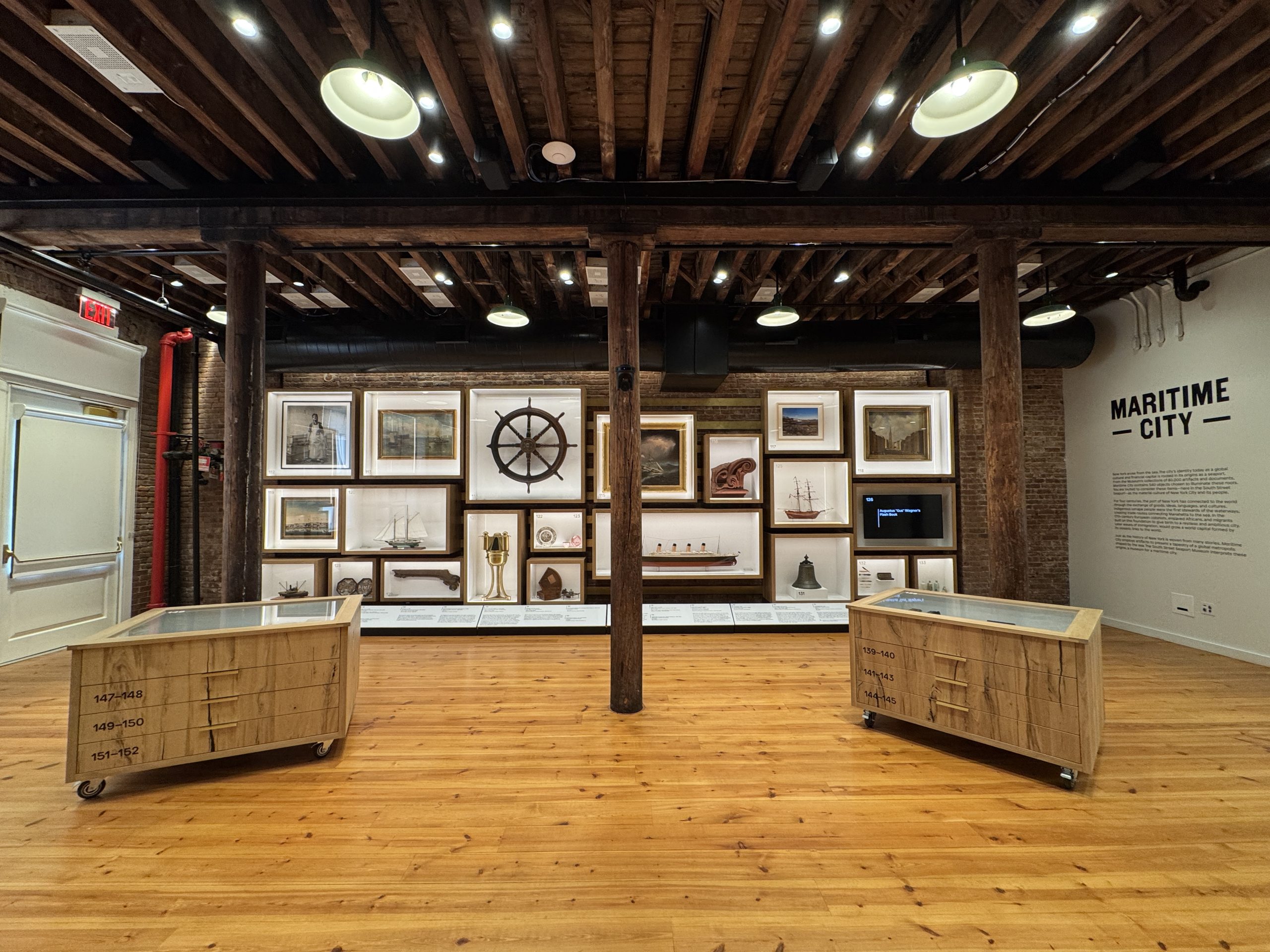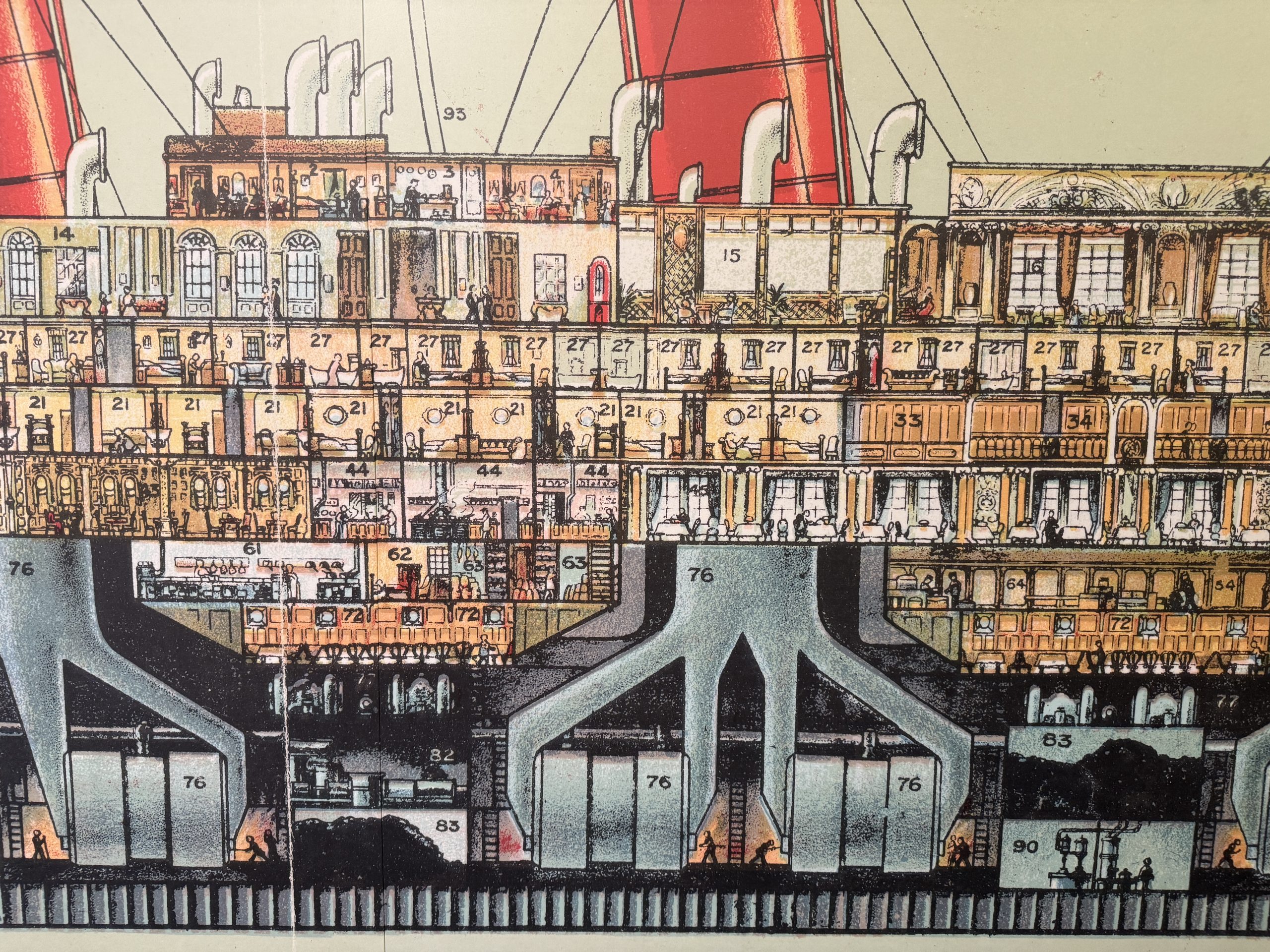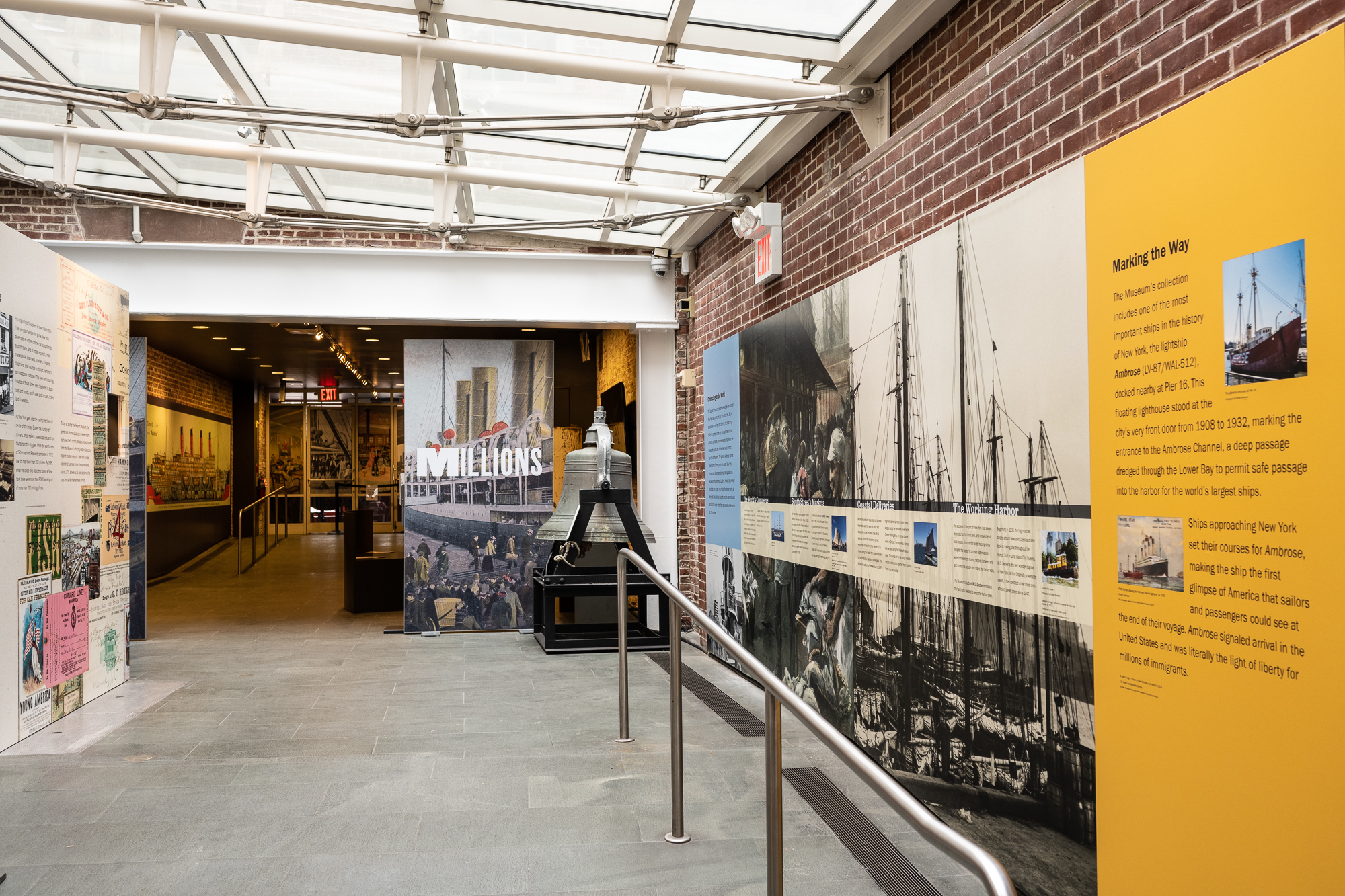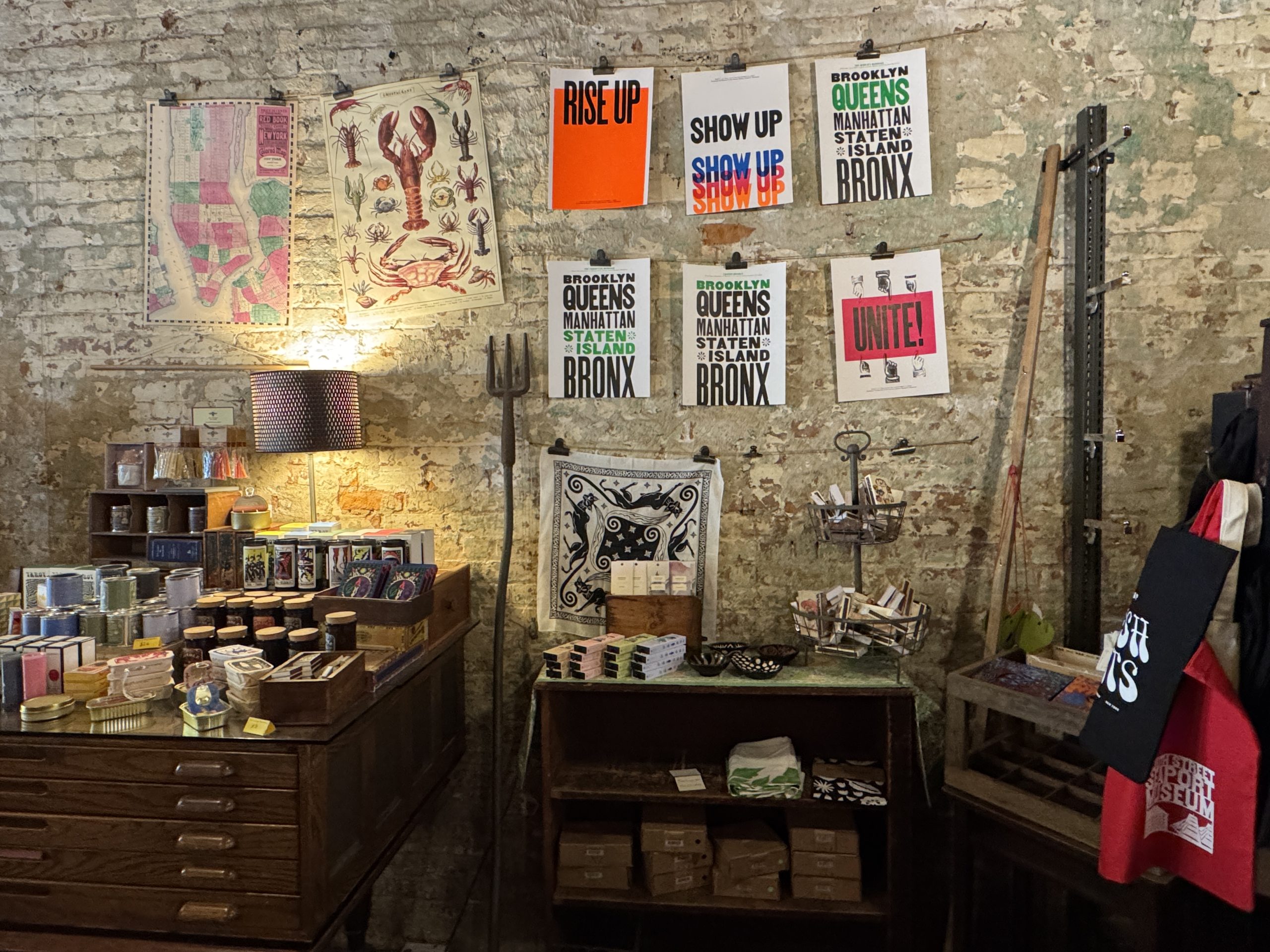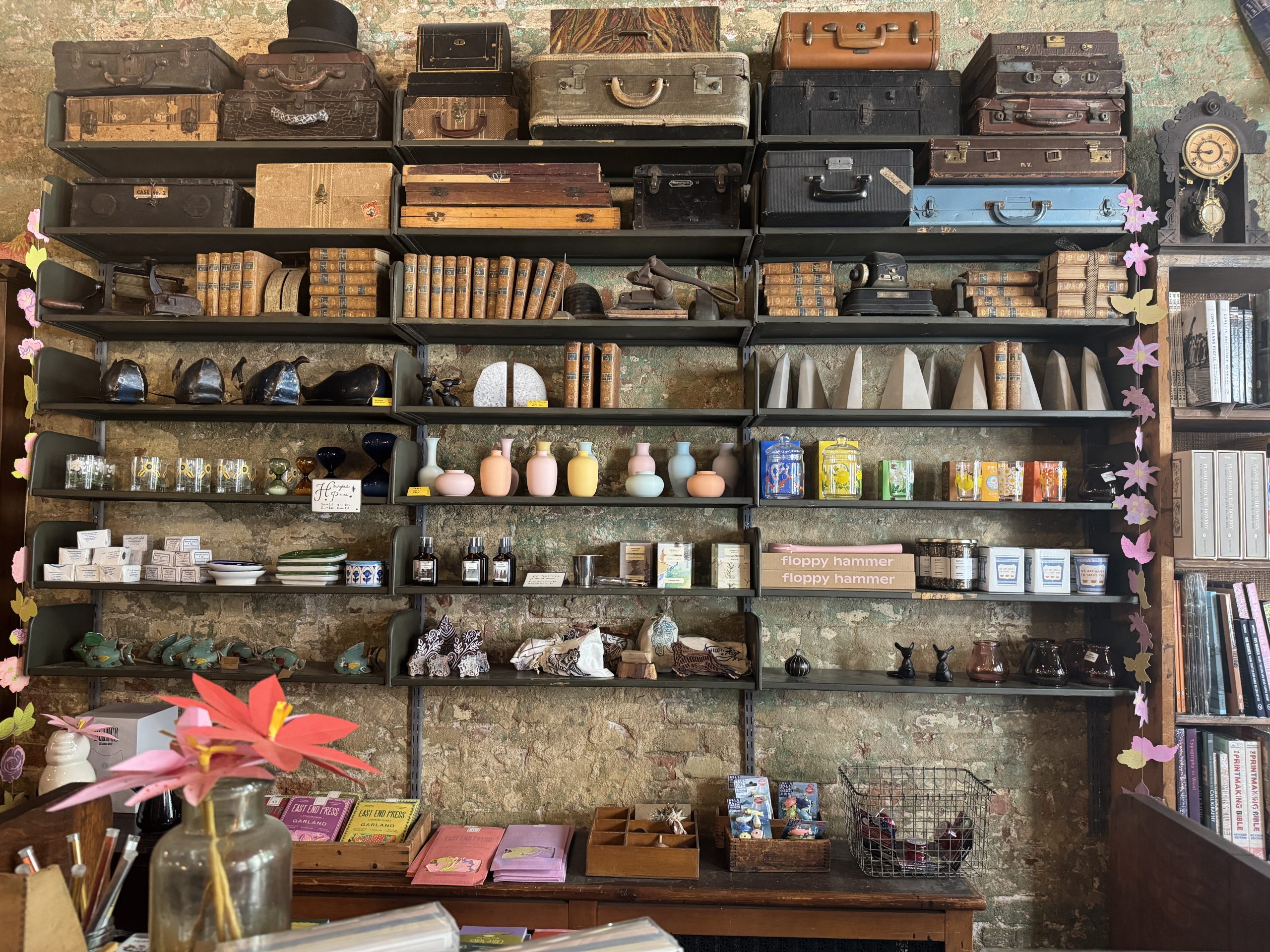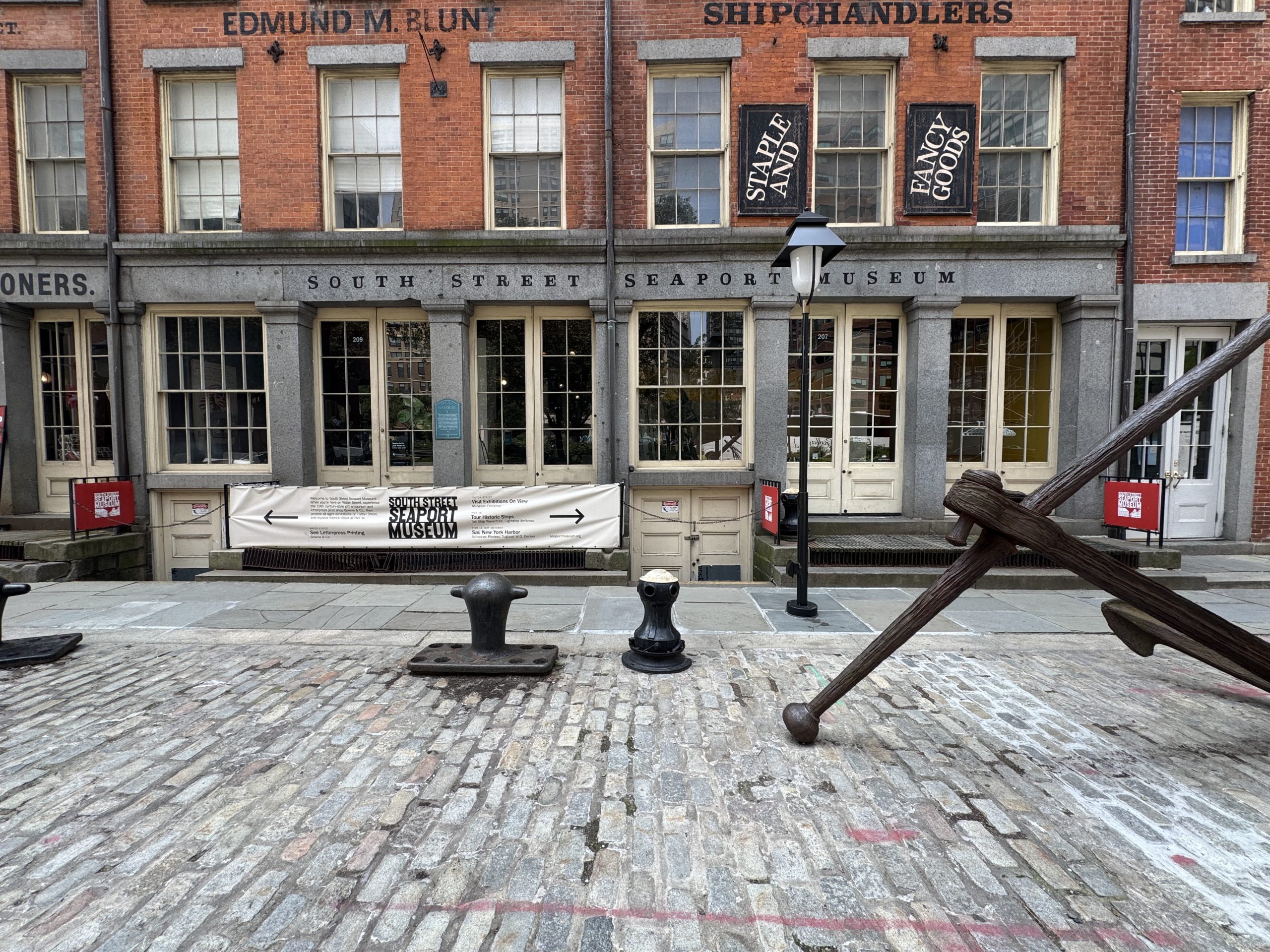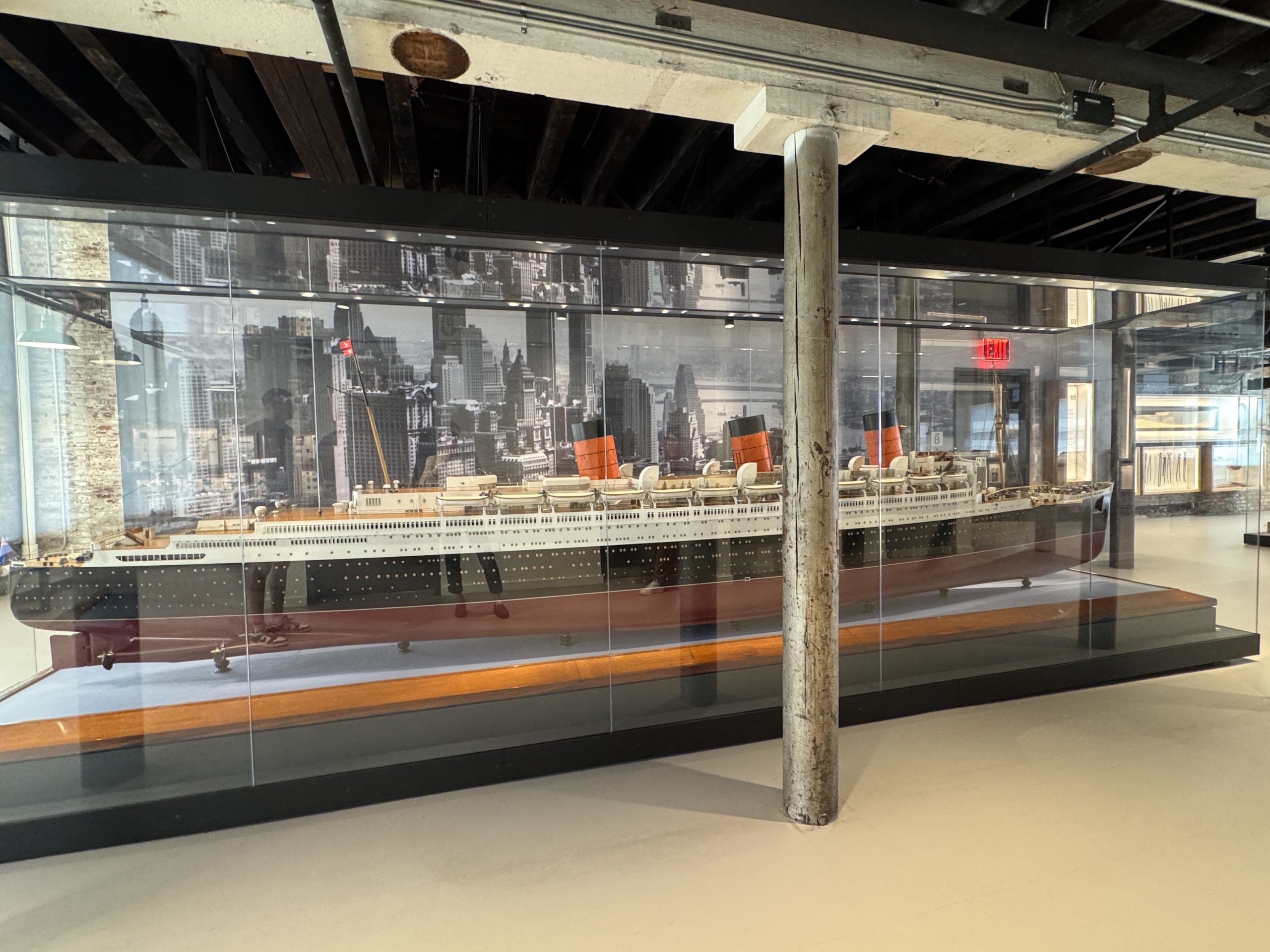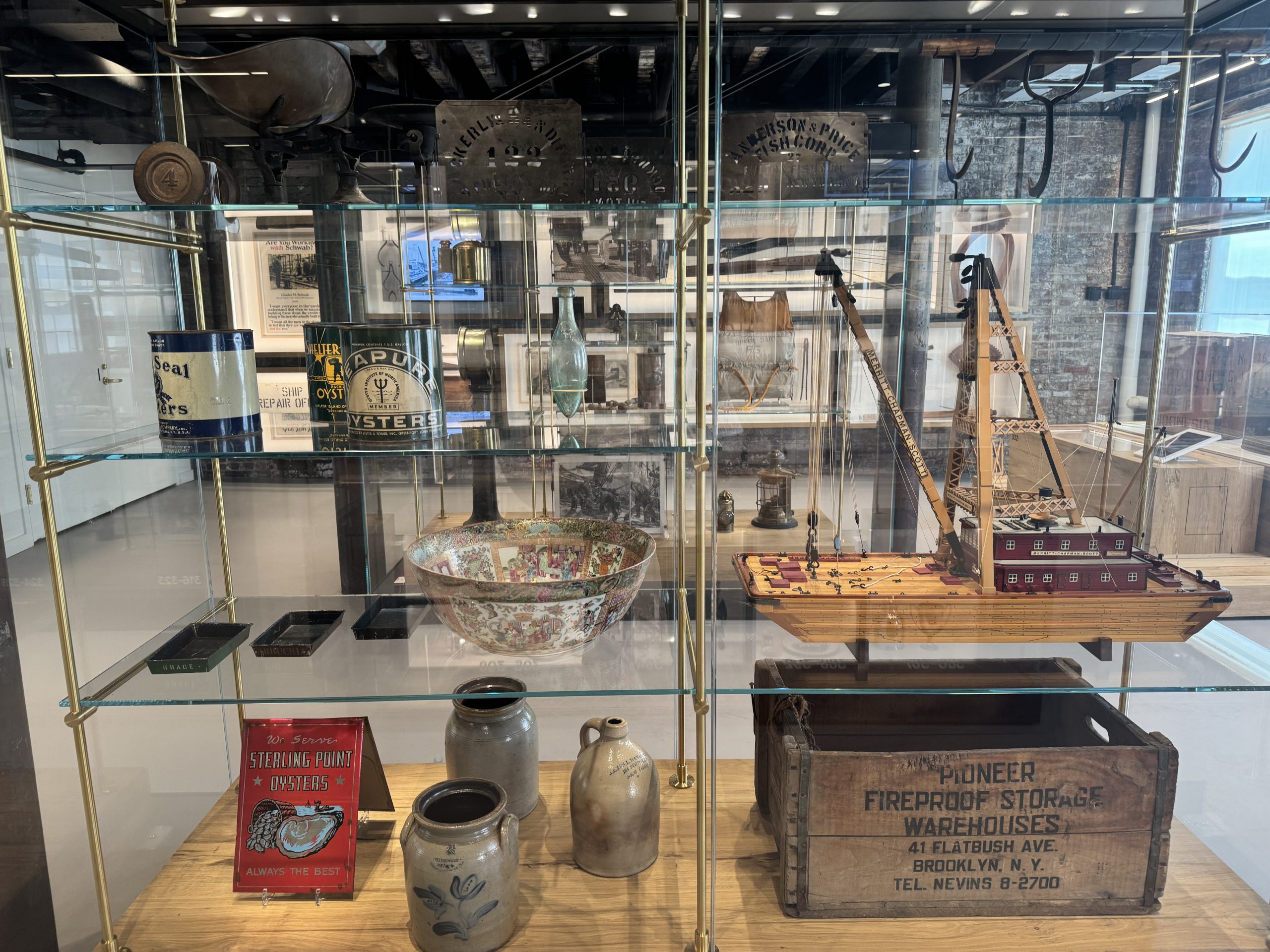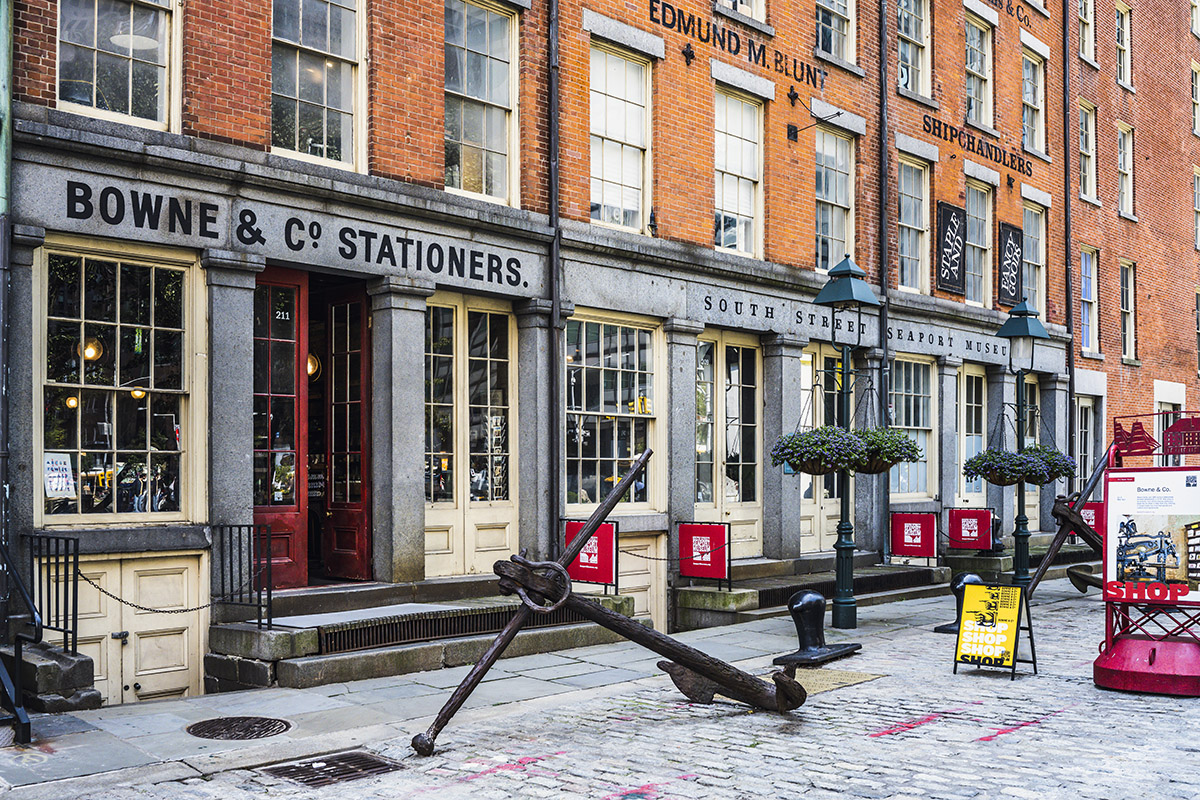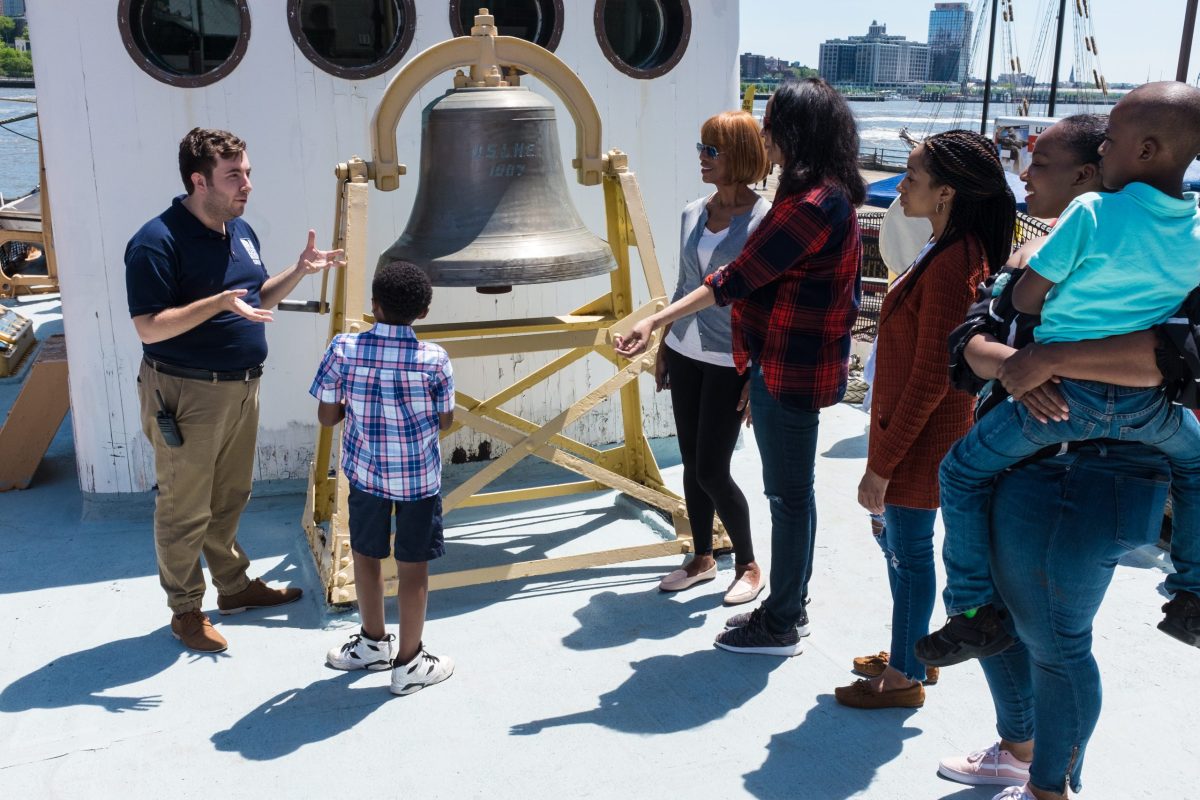History abounds in New York City and one of the places where the past truly comes alive is “where New York begins,” at the South Street Seaport Museum. This is a gem of a place nestled between Wall Street and tall office buildings of the financial district on one side and the New York Harbor on the other. Cobble-stone streets and five story brick buildings with 19th century shutters allow in plenty of sky and sunshine and point to New York’s past. Several of these buildings along with four historic sailing vessels and one tugboat are now what make up the South Street Seaport Museum campus in the middle of the historic seaport.
The mission of the South Street Seaport Museum is to “inspire exploration of New York City by preserving and interpreting the origins and growth of New York as a world port, a place where goods, labor, and cultures are exchanged through work, commerce, and the interaction of diverse communities.”
One of the most special aspects of the museum is its versatility and appeal to visitors of different ages and interests, and international visitors, as the seaport was truly the starting point for many immigrants. With an extensive collection of paintings, artifacts, a reference library, exhibition galleries, and education spaces, a working 19th century print shop, and four active historic vessels, it offers a wonderful mixture of research, documentation and presentation as well as lively programming. It is a rare combination of hands-on experiences, adventure as well as serious research and collections that are important additions to archiving New York history.
The museum is dedicated to outreach and education for all age groups from elementary and high school students to college students and adults. Programs range from dockside participatory seminars to stem programs, lessons in arts and humanities, social studies, and history. Some people celebrate the Fourth of July on the waterfront at the South Street Seaport Museum with the Seaport’s iconic fireworks displays from a truly special vantage point on Pier 16. Unforgettable sailing experiences combine ecology, culture, music, architecture, and history with its monthly sail programs which are in addition to the regular daytime sailing experiences on the historic Pioneer.
One program that is now returning to the deck of the 1885 tall ship Wavertree, is the monthly sea-song sing-along, Sea Chanteys and Maritime Music, which is hosted by a local artist who will lead the group through a variety of traditional maritime work songs and ballads. Singers of all levels, as well as listeners, will be welcome to participate in this free event where you will be able to lead or request a song during the round-robin or simply listen.
Exhibitions
The museum has rotating exhibitions and the current display, Maritime City, is now on view in the A.A. Thomson & Co. building located at 213 Water Street. In addition, Millions: Migrants and Millionaires Aboard the Great Liners, 1900–1914 and South Street and the Rise of New York are on view in the the Museum’s introduction gallery space inside Schermerhorn Row at 12 Fulton Street. This exhibition features both original and reproduced artifacts from the South Street Seaport Museum’s permanent collection including ocean liner memorabilia and ephemera, ceramics, and luggage trunks from both immigrants and First Class passengers.
Past exhibitions include Eric Carle’s presentation for children aged 2 to 7 of maritime-themed art and books, and it brought families into the worlds of A House for Hermit Crab and the cargo-ship adventures of 10 Little Rubber Ducks. Another exhibition, The Architecture of Trade: Schermerhorn Row and the Seaport examines the life of Schermerhorn Row, Manhattan’s only surviving row of Federal style merchant counting houses, and its place in the Seaport at South Street through the 19th and 20th centuries. When it was completed in 1812, the Schermerhorn block of houses was the largest building in New York after City Hall. It was built by ship owner, Peter Schermerhorn (1749-1826) and he leased the buildings to shipowners.
Street of Ships was an exhibition of selected works of art, artifacts, and reproductions from the Museum’s permanent collection and archives related to the 19th-century history of the Port of New York. The Original Gus Wagner: The Maritime Roots of Modern Tattoo explored Augustus “Gus” Wagner’s (American, 1872-1941) early life as a merchant seaman and tattoo artist who traveled the world from 1898-1902, and his return to the United States as a professional tattooist and tattooed man.
Collections
Conducting research is an important aspect of the Seaport Museum’s work and directly supports the mission to preserve and interpret the origins and growth of New York City. This was clear in the beautifully displayed and described items from its archives in the current exhibition. The Museum is actively engaged in a complete inventory of all its collections and archives. Currently there are over 28,000 works of art and historical artifacts, and over 80,000 archival materials.
Over the last few years, the Museum has launched many online initiatives, including virtual tours and digital programming; increased social media presence; the Collections Chronicles, is a blog that provides deeper context into the organization’s collection, its inventory and care; and a free Collections Online Portal.
The South Street Seaport is a one-of-a-kind treasure in the city of New York that shows and tells the history of commerce, immigration, trade, stories of sailing vessels and the people who sailed them, and owned them. Today, this area is full of bustling restaurants, tourists, bookshops, cafes, and modern day ferries alongside the preserved vessels and buildings. It has formed itself into an educational resource and outlet for all New Yorkers and interested visitors.
It is thanks to the foresight and vision of preservationists, including Peter Marsh Stanford who was instrumental in preserving South Street Seaport and raising awareness of New York’s maritime history in the late 1960s. He along with the Friends of South Street, who set aside a collection of entire city blocks in the South Street Seaport district as an area worthy of care and attention. Since that time, the museum and the development of South Street Seaport has been somewhat complicated but with a successful outcome today. Currently under construction is the Titanic Memorial Lighthouse, dedicated to the passengers who lost their lives, on the Titanic in 1912.

